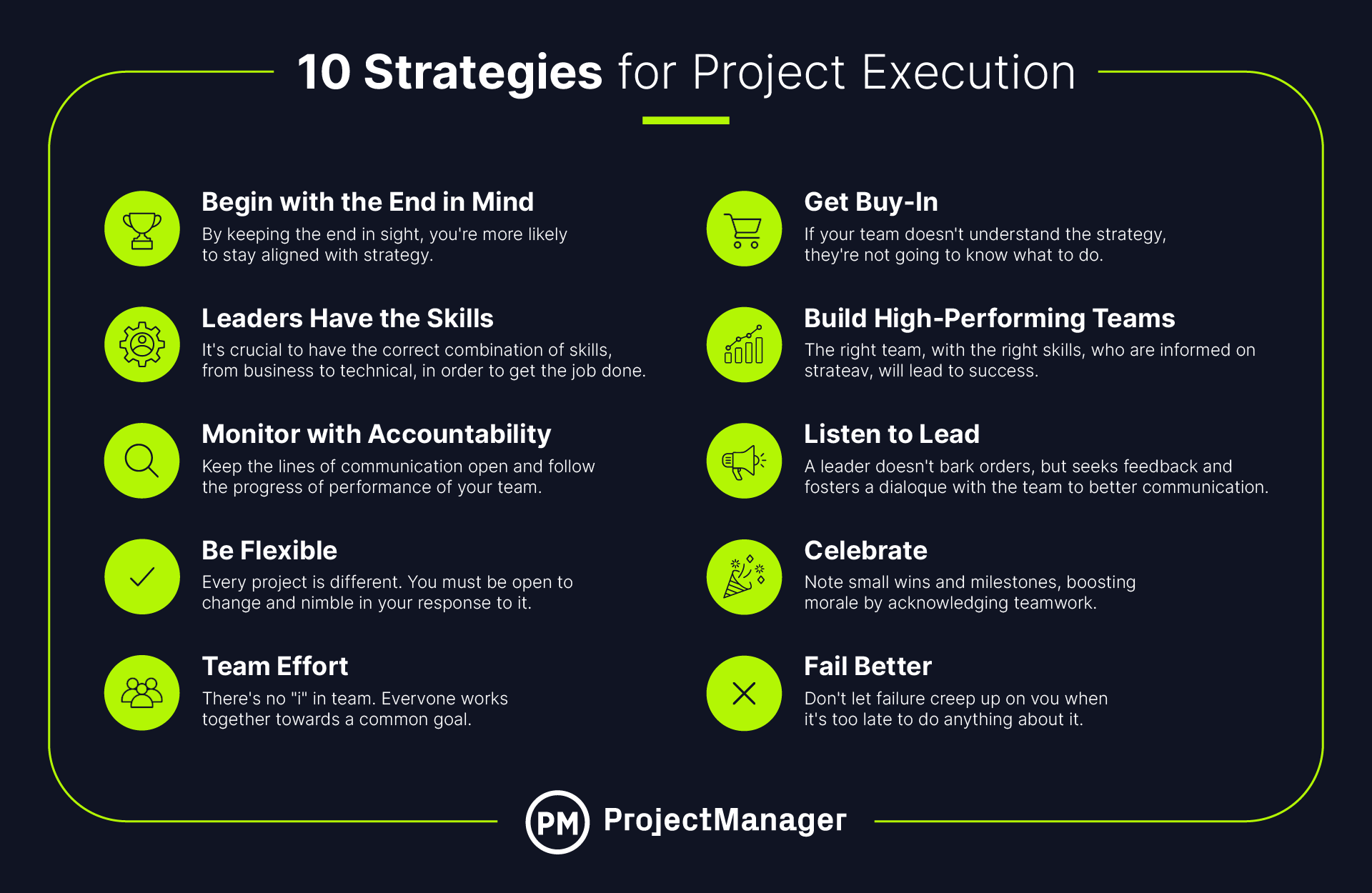
- Detailed Project Plan: Begin with a well-defined project plan that outlines the project’s scope, objectives, timeline, resources, and milestones. Ensure that all team members understand and have access to the plan.
- Clear Roles and Responsibilities: Assign clear roles and responsibilities to team members. Everyone should know what is expected of them and how their contributions align with the project’s goals.
- Effective Communication: Maintain open and regular communication channels among team members, stakeholders, and clients. Use collaboration tools, meetings, and status reports to keep everyone informed.
- Resource Management: Manage resources efficiently, including personnel, budget, equipment, and materials. Ensure that resources are allocated and utilized according to the project plan.
- Risk Management: Continuously identify, assess, and mitigate risks throughout the project. Have a plan in place to address potential issues and deviations from the plan.
- Quality Assurance: Implement quality control processes to monitor and ensure that project deliverables meet the required standards. Address quality issues promptly to prevent them from affecting the project’s progress.
- Change Management: Be prepared to handle changes to the project scope, requirements, or objectives. Have a formal change management process in place to assess and approve changes before implementing them.
- Monitoring and Control: Continuously monitor project performance against the plan. Use key performance indicators (KPIs) to track progress and take corrective actions when necessary to keep the project on course.
- Documentation: Maintain thorough documentation of project activities, decisions, and changes. This documentation is crucial for tracking progress, auditing, and facilitating knowledge transfer.
- Stakeholder Engagement: Keep stakeholders informed and engaged throughout the project. Address their concerns and expectations to maintain their support and involvement in the project’s success.

Additionally, it’s essential to maintain a flexible mindset during project execution, as unforeseen challenges and opportunities may arise. Being adaptable and responsive to changing circumstances can help ensure a successful project outcome.
Remember that project execution is an iterative process that involves continuous monitoring, adjustments, and improvements to ensure that the project stays aligned with its goals and objectives.
